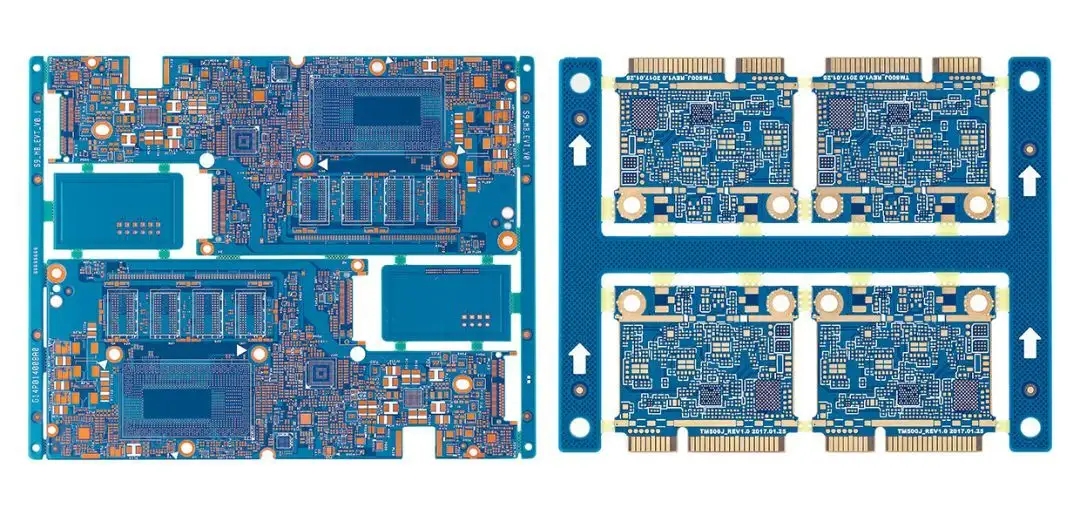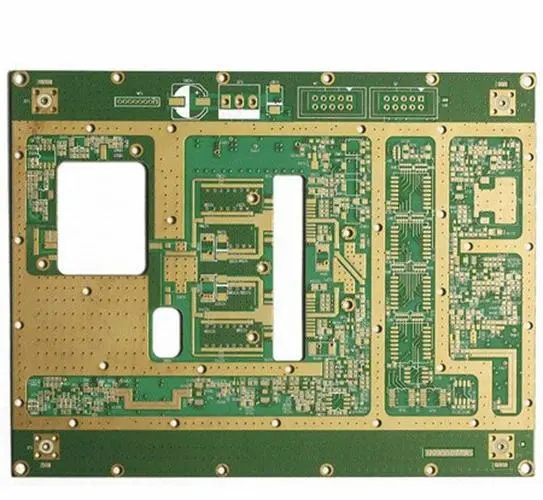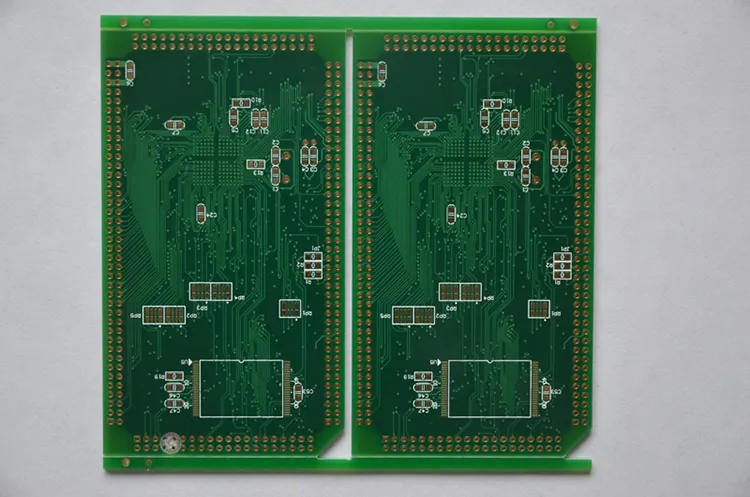
PCB preservation, baking time and gilded PCB components are easy to fall off
PCB manufacturers, PCB designers and PCBA manufacturers explain that PCB preservation, baking time and gilded PCB components are easy to fall off
After the PCB is manufactured, it will have a shelf life. After the shelf life, it is necessary to bake the PCB, otherwise it is easy to cause PCB explosion when the PCB is online in the SMT workshop. Now let's have a look at the editor of the Circuit board factory!
The storage time of PCB boards, as well as the temperature and time of baking PCB boards in industrial ovens, are subject to industry specifications.
1、 Specification of PCB control
1. Unpacking and storage of PCB
⑴ PCB sealing can be directly put into use within 2 months of the manufacturing date without opening;
⑵ The manufacturing date of PCB is within 2 months, and the unpacking date must be marked after unpacking;
(3) PCB board shall be manufactured within 2 months, and shall be put into use within 5 days after unpacking.
2. PCB baking
⑴ For PCB boards that have been sealed and unpacked for more than 5 days within 2 months of the manufacturing date, please bake at 120 ± 5 ℃ for 1 hour;
(2) If the PCB board exceeds the manufacturing date by 2 months, please bake it at 120 ± 5 ℃ for 1 hour before going online;
(3) If the PCB board exceeds the manufacturing date by 2 to 6 months, please bake it at 120 ± 5 ℃ for 2 hours before going online;
(4) If the PCB exceeds the manufacturing date by 6 months to 1 year, please bake it at 120 ± 5 ℃ for 4 hours before going online;
(5) Baked PCB shall be used up within 5 days (put into IR REFLOW), and it shall be baked for another 1 hour before it can be used online;
(6) If the PCB exceeds the manufacturing date by 1 year, please bake it at 120 ± 5 ℃ for 4 hours before going online, and then send it to the PCB factory for re tin spraying before going online.

3. PCB baking method
⑴ Large circuit boards (16 PORT and above, including 16 PORT) shall be placed horizontally, with a maximum of 30 pieces in a stack. Open the oven to take out the PCB and place it horizontally for natural cooling within 10 minutes after baking (need to press the anti board jig)
(2) Small and medium-sized circuit boards (including 8PORT below 8PORT) shall be placed horizontally, with a maximum of 40 pieces in a stack, and the number of vertical boards is unlimited. Open the oven to take out PCB and place it horizontally for natural cooling within 10 minutes after baking (it is necessary to press the anti board jig)
2、 Preservation and baking of circuit boards in different regions
The specific storage time and baking temperature of PCB are not only related to the manufacturing capacity and process of PCB manufacturers, but also have a great relationship with the region.
The shelf life of PCB made by OSP oxidation resistance process and pure gold deposition process is generally 6 months after packaging. Baking is generally not recommended for OSP process.
The preservation and baking time of PCB circuit boards have a lot to do with the region. In the south, the humidity is usually heavy, especially in Guangdong and Guangxi. In March and April of each year, there will be "back to the south" weather. It is rainy and rainy every day. At this time, it is very humid. PCB must be used up within 24 hours after exposure to air, otherwise it is easy to oxidize. After normal opening, it is best to use up within 8 hours. For some PCB that need to be baked, the baking time should be longer. In the north, the weather is generally dry, and the preservation time of PCB is longer, and the baking time can be shorter. The baking temperature is generally 120 ± 5 ℃, and the baking time depends on the specific situation.
For the storage time, baking time and temperature of PCB boards, specific analysis should be made on specific issues. On the basis of PCB management and control specifications, specific choices should be made according to the production capacity, process, region and season of different circuit board manufacturers in Shenzhen.
Analysis and Improvement of the Causes of the Components Falling off after Welding of the Deposited PCB
As this undesirable phenomenon involves many processes such as the surface treatment of circuit boards, solder paste, reflow soldering and SMT surface mounting process, in order to find out the cause accurately, we convened the foundering plant, the mounting plant, the solder paste plant and the process department of our company to study what the problem is.
Cause analysis:
We found this circuit board produced in the same batch in stock. Do analytical experiments to find out where the problem lies:
1. Analysis of the problem board's gold section:
2. Remedial measures for circuit boards returned by customers.
3. Slice analysis of the solder joint of the circuit board returned by the customer.
4. The stock boards shall be returned to the tin spraying factory for tin spraying, and the solderability of the gold deposit on the circuit board shall be tested.
5. Solder paste is brushed on the boards in stock, reflow soldering is conducted, and the actual solderability of circuit boards is tested.
Through a series of experimental analysis and judgment, a nickel layer is plated on the copper foil surface of the circuit board, and then a layer of gold is deposited on the nickel layer to protect the nickel layer from oxidation. During patch welding, first apply a layer of solder paste on the bonding pad. The solder paste naturally penetrates through the gold deposit layer and contacts the nickel layer (the dull black is the result of the action of the solder paste and the nickel layer). The solder paste contains some active ingredients. When the temperature reaches the melting temperature of the solder paste during reflow soldering, with the help of the active ingredients, the tin and each layer form a metal bonding layer (IMC).
The boards returned by customers did not meet the conditions required for welding, such as the temperature of reflow soldering (low temperature in the north, insufficient preheating, and the actual temperature is inconsistent with the temperature zone table), the activity of solder paste (storage conditions of solder paste), the thickness of steel mesh, etc., which resulted in the failure of nickel layer to form a metallized layer with tin, resulting in the device falling off.
It is a pity that:
A. The first board production inspection was not carried out during the production of batch boards. It was very troublesome to find problems after all the boards were completed.
B. The active ingredients contained in the solder paste are effective and volatilized when the first reflow soldering is conducted at high temperature, and no effective alloy layer is formed. The effect is not obvious when the solder paste is welded at high temperature again, which is unfavorable for remediation.
Interim Remedies:
As it is a batch of gilded circuit boards, manual electric soldering iron repair welding and manual repair welding with hot air gun do not have practical operability. So although it is useful, it cannot solve the problem.
Raise the furnace temperature and reflow soldering again. Although the help of the active component of solder paste resistance is lost, the metal bonding layer can also be formed under sufficient high temperature. As for the effect and high temperature loss, we need to ask the customer to make a balance.
We tested that,
The problem board returned by the customer was reflowed at 265 degrees, and the display still fell off.
Adjust the reflow temperature to 285 ℃, and then reflow again. As a result, the display will still fall off.
Increase the reflow soldering temperature to 300 ℃ again, and then reflow soldering again, resulting in firm welding.
Will the effect of repairing the problem board with flux be better? If the customer needs, we can arrange the patch factory to do the test again.
PCB manufacturers, PCB designers and PCBA manufacturers explain that PCB preservation, baking time and gilded PCB components are easy to fall off.






